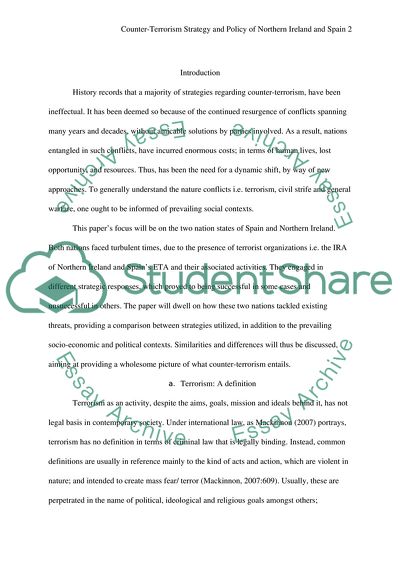Cite this document
(“Comparison of the counter-terrorism strategy and policy of Northern Essay”, n.d.)
Comparison of the counter-terrorism strategy and policy of Northern Essay. Retrieved from https://studentshare.org/miscellaneous/1639817-comparison-of-the-counter-terrorism-strategy-and-policy-of-northern-ireland-ira-and-spain-eta-what-does-the-comparison-tell-us-about-counter-terrorism
Comparison of the counter-terrorism strategy and policy of Northern Essay. Retrieved from https://studentshare.org/miscellaneous/1639817-comparison-of-the-counter-terrorism-strategy-and-policy-of-northern-ireland-ira-and-spain-eta-what-does-the-comparison-tell-us-about-counter-terrorism
(Comparison of the Counter-Terrorism Strategy and Policy of Northern Essay)
Comparison of the Counter-Terrorism Strategy and Policy of Northern Essay. https://studentshare.org/miscellaneous/1639817-comparison-of-the-counter-terrorism-strategy-and-policy-of-northern-ireland-ira-and-spain-eta-what-does-the-comparison-tell-us-about-counter-terrorism.
Comparison of the Counter-Terrorism Strategy and Policy of Northern Essay. https://studentshare.org/miscellaneous/1639817-comparison-of-the-counter-terrorism-strategy-and-policy-of-northern-ireland-ira-and-spain-eta-what-does-the-comparison-tell-us-about-counter-terrorism.
“Comparison of the Counter-Terrorism Strategy and Policy of Northern Essay”, n.d. https://studentshare.org/miscellaneous/1639817-comparison-of-the-counter-terrorism-strategy-and-policy-of-northern-ireland-ira-and-spain-eta-what-does-the-comparison-tell-us-about-counter-terrorism.


